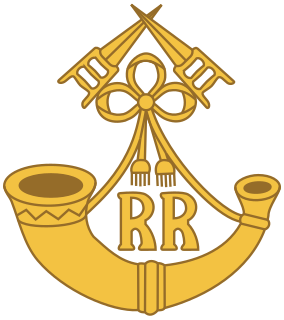
The Rajputana Rifles is the oldest rifle regiment of the Indian Army. It was originally a part of the British Indian Army, when six previously existing regiments were amalgamated to form six battalions of the 6th Rajputana Rifles. In 1945, the numeral designation was dropped from the title and in 1947 the regiment was transferred to the newly independent Indian Army. Since independence, the regiment has been involved in a number of conflicts against Pakistan, as well as contributing to the Custodian Force (India) in Korea under the aegis of the United Nations in 1953–54 and to the UN Mission to the Congo in 1962. As a rifle regiment, it uses a bugle horn as its insignia, the same as the British Light Division, but unlike its British counterparts, the Rajputana Rifles march at the same march pace used in the Indian Army as a whole.

The Ashoka Chakra is India's highest peacetime military decoration awarded for valour, courageous action or self-sacrifice away from the battlefield. It is the peacetime equivalent of the Param Vir Chakra (PVC), and is awarded for the "most conspicuous bravery or some daring or pre-eminent valour or self-sacrifice" other than in the face of the enemy. The decoration may be awarded either to military or civilian personnel.
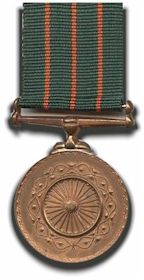
The Shaurya Chakra is an Indian military decoration awarded for valour, courageous action or self-sacrifice while not engaged in direct action with the enemy. It may be awarded to civilians as well as military personnel, sometimes posthumously. It is third in order of precedence of peacetime gallantry awards and comes after the Ashoka Chakra and the Kirti Chakra. It precedes the Yudh Seva Medal.[total recipients 2094]. [total awarded posthumously is 677].

The Kirti Chakra is an Indian military decoration awarded for valour, courageous action or self-sacrifice away from the field of battle. It may be awarded to civilians as well as military personnel, including posthumous awards. It is the peacetime equivalent of the Maha Vir Chakra. It is second in order of precedence of peacetime gallantry awards, comes after Ashoka Chakra and before Shaurya Chakra. Before 1967, the award was known as the Ashoka Chakra, Class II.
Pathania is a branch of Tomar Rajput warrior clan of Chandravanshi lineage following Sanatan Hindu Dharma. Pathania surname is derived from Pathankot tehsil which was capital of Nurpur kingdom where they once ruled. Their members inhabit in Himachal Pradesh, Punjab and Jammu. Defence services have remained their first choice of profession and are largely found working in the Indian Army, Indian Navy and Indian Airforce.

The Vayu Sena Medal is a military decoration, usually awarded in peacetime for a job well done in the Indian Air Force. However, it has been granted during times of conflict for acts of gallantry in the face of enemy, though not in the same numbers as the Vir Chakra.
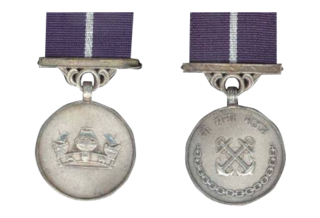
Nau Sena Medal is a gallantry award for servicemen in the Indian Navy.
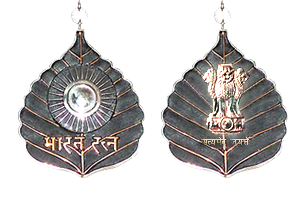
The Indian honours system is the system of awards given to individuals for a variety of services to the Republic of India. The categories of awards are as follows:
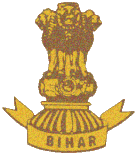
The Bihar Regiment is an Indian Army infantry regiment. It traces its origins back to the British Indian Army. The Bihar Regiment was formed in 1941 by regularising the 11th (Territorial) Battalion, the 19th Hyderabad Regiment, and raising new battalions. The Bihar Regimental Centre (BRC) is located at Danapur Cantonment, Patna, the second oldest cantonment of India. INS Vikramaditya, the Indian Navy's largest ship and its sole aircraft carrier is affiliated to the Bihar Regiment, Indian Army's highly decorated and battle-hardened unit. The regiment also distinguishes itself by having the highest number of Rashtriya Rifles battalions among all regiments of the Indian Army.

Ati Vishisht Seva Medal (AVSM) is a military award of India given to recognize "distinguished service of an exceptional order" to all ranks of the armed forces. The award is a peacetime equivalent of Uttam Yuddh Seva Medal, which is a Wartime Distinguished Service decoration.

The Vishisht Seva Medal (VSM) is a decoration of the Indian armed forces. It is awarded to recognize "distinguished service of a high order" to all ranks of the Indian Armed forces.

Param Vishisht Seva Medal (PVSM) is a military award of India. It was constituted in 1960 and since then it is awarded in recognition to peace-time service of the most exceptional order and may be awarded posthumously. All ranks of the Indian Armed Forces including Territorial Army, Auxiliary and Reserve Forces, Nursing officers and other members of the Nursing services and other lawfully constituted Armed Forces are eligible for the award.

The Sarvottam Yudh Seva Medal is India's highest wartime distinguished service decoration. It is awarded for the highest degree of distinguished service in an operational context, which includes times of war, conflict, or hostilities. The award is a war-time equivalent of the Param Vishisht Seva Medal, which is India's highest peacetime distinguished service decoration.
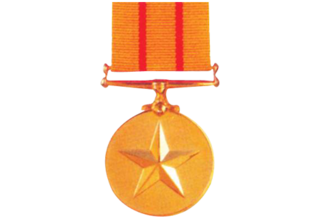
Uttam Yudh Seva Medal is one of India's military decorations for Wartime Distinguished Service. It is awarded for a high degree of distinguished services in an operational context. "Operational context" includes times of war, conflict, or hostilities. The award is a wartime equivalent of Ati Vishisht Seva Medal, which is a Peacetime Distinguished Service decoration. Uttam Yudh Seva Medal may be awarded posthumously.
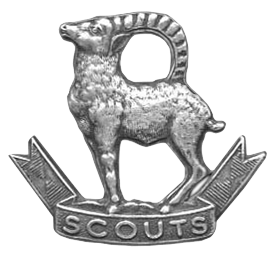
The Ladakh Scouts is an infantry regiment of the Indian Army, nicknamed the "Snow Warriors" or "Snow Leopards". The regiment specialises in mountain warfare, and its primary role is to guard India's borders in the high altitudes of the Union Territory of Ladakh.
The Sainya Seva Medal is a medal of the Indian Armed Forces. The medal is awarded in recognition of non-operational service under conditions of hardship and severe climate in specified areas.

Major General Samir Kumar Chakravorty or S. K. Chakravorty is the former GOC of the 28 Infantry Division of the Indian Army. During the Kargil war in 1999, he commanded 18 Garwhal Rifles which received the Chief of Army Staff’s instant citation, Battle Honour Drass, and Theatre Honour Kargil for feats of gallant action during the Kargil War.

Lieutenant General Harinder Singh PVSM, AVSM, YSM, SM, VSM, is a serving General Officer in the Indian Army. He is currently serving as commandant of Indian Military Academy, assumed office in October 2020 succeeding Lt Gen Jaiveer Singh Negi. Previously, he was the Commander of XIV Corps from October 2019 to October 2020, succeeding Lt Gen Yogesh Kumar Joshi, PVSM, UYSM, AVSM, VrC, SM, ADC.

Lieutenant General Yogendra Dimri AVSM, VSM is a serving General Officer in the Indian Army. He currently serves as the General Officer Commanding-in-Chief of the Central Command in April 2021. Previously served as command of a corps and as Chief of Staff of the Western Command, he was appointed as a military attaché in the United Nations Transitional Authority in Cambodia and directing staff at the Defence Services Staff College.
The Videsh Seva Medal is a service medal of the Indian Armed Forces. It is presented to all ranks of the three services for services rendered outside India. It was instituted on 26 January 1960. It can also be awarded posthumously.


















